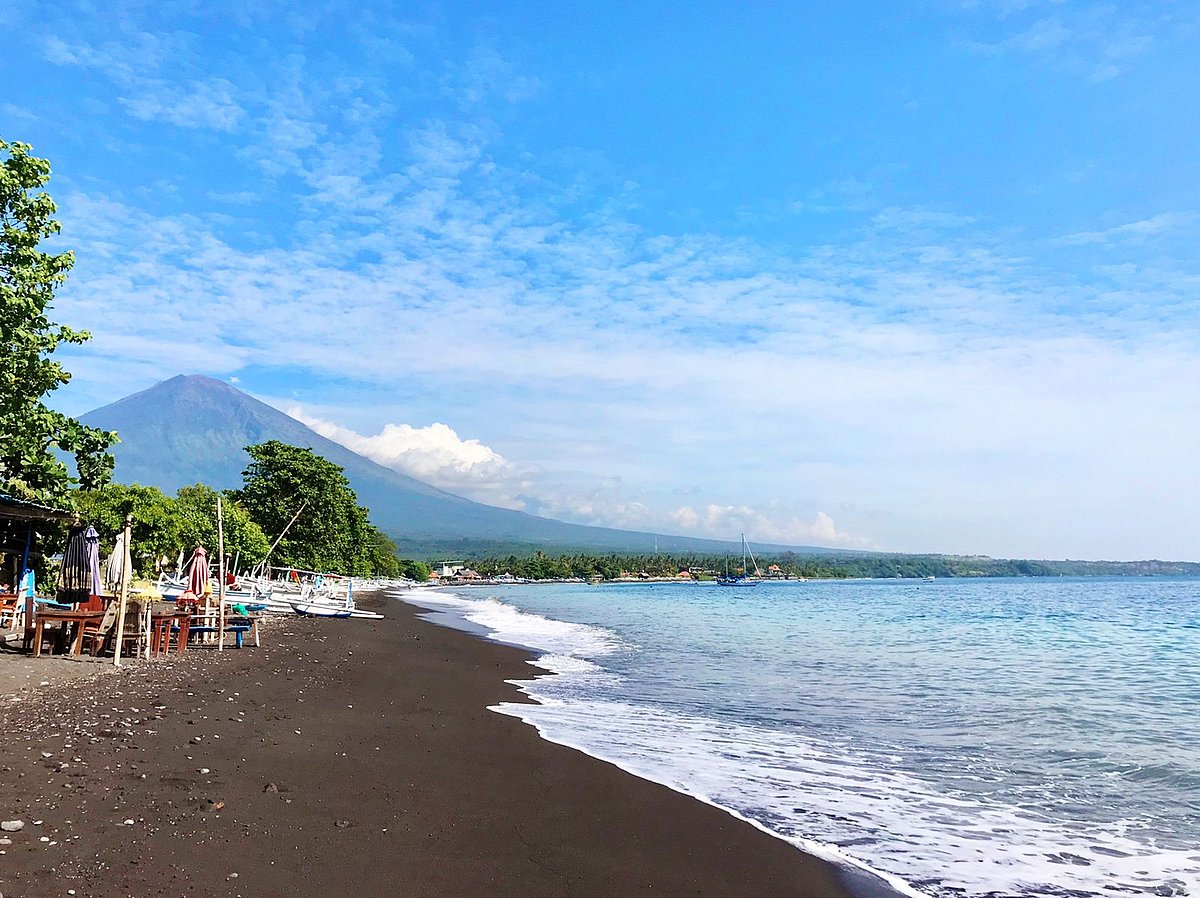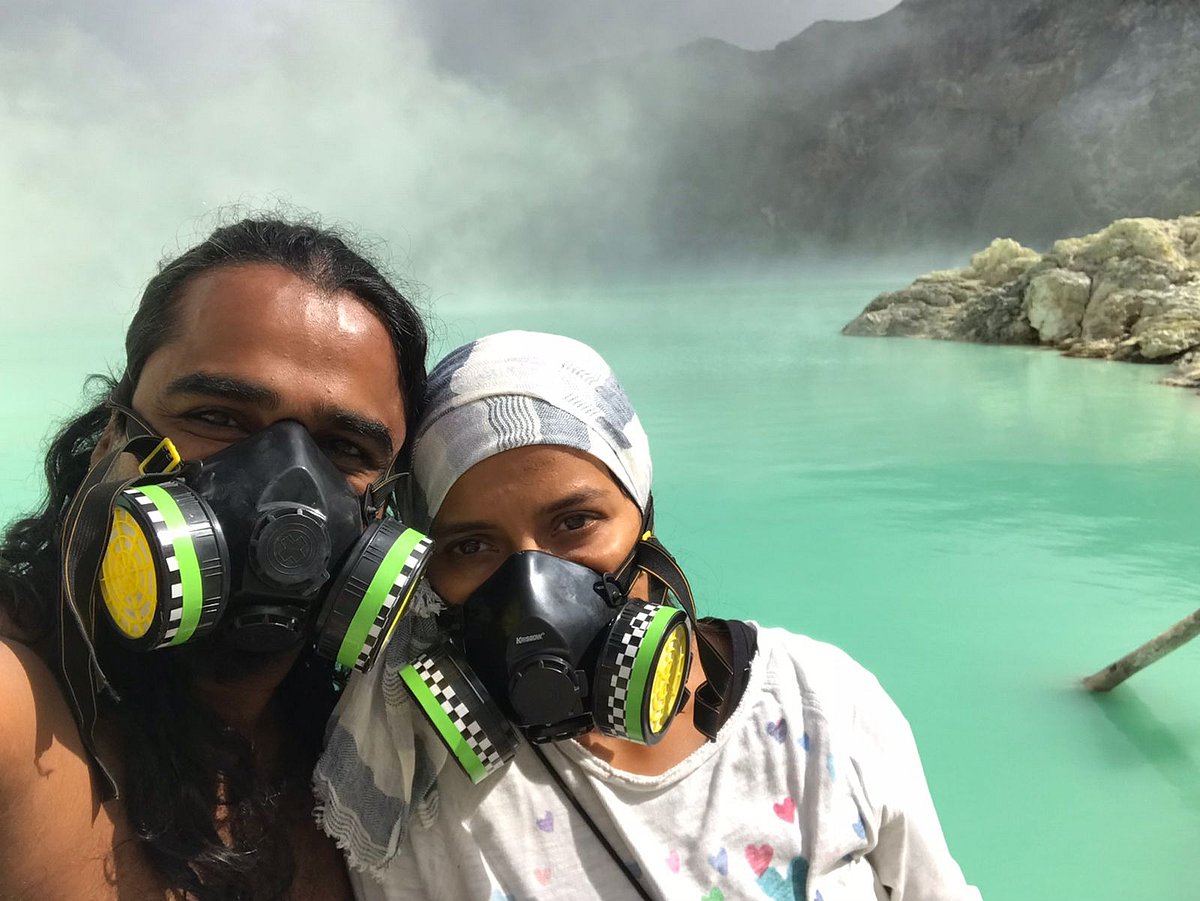In Bali, on breathtaking, dragon-breathing ground
Wound up by urban living, educator Timira learns how to breathe easy in the ancient volcanic mountains of Bali

“I can’t breathe!” a 22-year-old me said repeatedly. As I sank to the ground in the middle of a forest, high up in the hills, I was blue in the face. We were surrounded by beauty, but I was utterly incapable of enjoying any of it. As someone who went to the gym regularly, I could not fathom how a trek uphill could reduce me to such misery.
My eyes did soak in the beauty all around me, but the sharp wheezing sound from my lungs warned me of the uphill task. Panicky and gasping, I had no idea how to manage my own breathing. The breath and the body have such a close relationship, and yet, we are never really taught to understand this. The experience of being completely out of breath impacted me profoundly.
I returned to Bombay and learnt to swim. I did yoga every day and I cycled long distances. These were the ways in which I got my second wind.
Then, earlier this year, I took the plunge and went snorkelling to Bali, Indonesia. Amplified inside the snorkel mask, no sound except that of my own breath. Controlled, calm, steady. I felt ready to take on anything.

And seeing that I was in Bali, a land known as much for its gorgeous waters as for its active volcanoes—some of which can be climbed—off I went, straight from the ocean to the mountains.
Volcanic mountains in Bali are considered sacred. Mt Agung, towering at 3,000 metres, is the most sacred of them all, believed to be the home of Mahadeva, the highest manifestation of Lord Shiva. There are other legends around Mt Agung, each more interesting than the other. From Amed beach, where I was staying, Mt Agung did look like a celestial structure, linking the earth to the heavens. Seeing its fierce presence overlooking the land and the people below, I understood that creating legends around it was possibly the only way to develop a positive relationship with this enormous being.
I say ‘being’ because this was the first time I saw a mountain as a live, breathing entity. When you walk on its slopes, you can feel its belly full of life. Some of the volcanoes emit little puffs from the tops of their mouths, some have hot steam coming out of crevices, others spew hot lava. It is impossible to see them as static, non-living structures.
Unfortunately, I was unable to do the three-day Mt Agung trek, as it was closed due to high volcanic activity. So, my first trek was up Mt Batur, an easier trek, though not for those with weak knees. Only two to three hours long, but with steep inclines every now and then. The best part was climbing at 2 a.m. in absolute darkness and silence. Most climbs begin in the middle of the night in order to reach the summit in time to catch the sunrise. It’s dark and the strapped-on headlight doesn’t really tell you where to go. A beautiful relationship starts to build between trekkers, as we lend each other a hand to step up onto narrow pathways and duck below tree branches, submitting to this wondrous creature we tread on… all in silence. (Well, only till the point when our sweet guide begins to sing “kuchh kuchh hota hai” because I come from India, and the Balinese love Bollywood and Shah Rukh Khan!)
When you reach the summit, you catch your breath, from wonder. The sunrise is, as expected, spectacular. You can hear every quiet breath inside your chest and you can feel the mountain breathe under your feet.
Batur is special because it is constantly smoking. On top of the mountain, there are parts where you can shift a piece of rock to see hot steam gushing out. It’s quite overwhelming, until a guide swings by, and pops out your breakfast from one of those crevices. Not kidding! True story. Little hay packs, with something cooking at their centre, had been stuffed into the crevices, which guides came along periodically to take out and serve the trekkers. There I was, sitting atop an active volcanic mountain at the crack of dawn, with the love of my life next to me, looking at the sun rising above an ocean of clouds, when a plate of steamed banana sandwiches and boiled eggs was slid onto my lap! Oddly, it felt like home. There was love, there was food… and there was Bollywood!
Next stop, East Java: to climb Mt Bromo and Mt Ijen. Both very different landscapes and very different kinds of volcanic mountains. Bromo comes from Lord Brahma, the creator. It is located amidst what is called ‘the sea of sand’, an expansive plain full of volcanic sedimentation from Mt Bromo’s eruptions. The almost golden air-like quality of the sea of sand that looked like it was dancing made the scene fantastically utopian. (An important segue here is to shine a light on the landscape that surrounds a volcanic mountain. Mt Batur had untraversable lava fields with shining black jagged rocks, while the beaches around Mt Agung were of rich black sand.)
The best way to view Mt Bromo is at sunrise from a distance, atop Mt Penanjakan and that’s exactly where we were. From this vantage point, you not only see Mt Bromo and its wide gaping mouth—which had quite literally blown its top!—you also see the massive Mt Semeru behind it, which every now and then lets out a little puff of smoke to add to the drama.

After this breathtaking view, the climb to the edge of Mt Bromo’s crater was slightly underwhelming. There were horses to take you to the last point before the climb, too many vendors trying to sell you stuff and worst of all—a tall concrete stairway, packed with tourists, that goes straight up to the edge of Lord Brahma’s abode. Could this be where Zeppelin found his inspiration? I doubt it! I had to work very hard to not get sucked into the noise, almost literally shutting down my senses until I reached a quiet part of the crater’s edge and peeked into the belly of the mountain.
That moment was magic. No railings, no protection between me and the core of the mountain standing bare below me. One false step and you could fall straight in. I could hear it gurgle. Clouds of hot sulphuric steam rose from its empty belly towards me. I kept staring, knowing I’d be enveloped in a few seconds, but I couldn’t move. It was hypnotic. I wrapped a cloth around my nose and mouth as the steam rose higher around me. I had nothing to hold on to but my breath, the steadiness of it, as I matched my breathing with that of the mountain. That’s how I remember it, even today, not through pictures but through the way I breathed.
Breath as a reservoir of memory sounds paradoxical considering breathing is all about letting go, not holding on. Meditation teaches us exactly that. Yet, every breath holds oceans of memory, its peaks and troughs, its highs and lows.
I was now at the edge of our last mountain, Mt Ijen. As I strapped on the gas mask to climb down into Mt Ijen’s crater filled with sulphuric gases, the sound of my amplified breath brought back the blissful memory of being inside the ocean just before getting here. Other trauma-filled childhood memories of asthma attacks and breathing through oxygen masks crowded in; imagined experiences of being trapped in a gas chamber pushed through the crevices of my mind.
Known for its blue lava (or blue fire) and its acidic crater lake, Mt Ijen is a three-hour trek to the rim of the crater, and another 45 minutes down to the bank of the one-km-wide turquoise-coloured dangerously acidic lake. The banks are where the volcanic gases are trapped and channeled through pipes, turning first into molten sulphur and then solid sulphur blocks. Ideally, this trek should be done at midnight in order to see the blue flame ignited by the sulfuric gas emerging from the cracks at extremely high temperatures. However, the midnight trek was restricted at the time. So, while we couldn’t manage to catch the blue fire, our guide did find a way to send us down into the crater with a local miner.

We climbed down in absolute silence, in a landscape that was completely barren, barring a few miners going about their work with alarming ease. The turquoise lake looked like a jewel as the sun got brighter. Such beauty, as we know from our grandmothers’ tales, is dangerous, to be skirted, or wisely stayed away from. Clearly, my partner’s grandma hadn’t been such a skilled storyteller, seeing that his enthusiasm led him to wade knee deep into the lake! Was this it? Were his legs going to melt away as we pulled him out? The drama was soothed when the toothless miner with the smile of a thousand suns assured us, while washing off hot sedimentation from said-partner’s pants and shoes, that he would not return from this (mis)adventure as a radioactive infected human.
The climb back up, out of the crater, was a challenge.
The wind had picked up and the sulphur fumes were blowing our way. There were moments when we had to stop climbing because being surrounded by the gas meant zero visibility. The gas masks didn’t really help at this point. Eyes burned and every breath up the steep crater was difficult.
All I had with me was the hardened, cracked palm of my miner friend holding my hand tightly, carefully, and the amplified sound of my own laboured breathing. There it was again—that slight wheezing sound at the end of every breath.
As I climbed out of the belly of a 300,000-year-old mountain that defined time and life beyond my meagre human comprehension, something changed, and I felt one with the mountain. Even if for a fleeting second, just for one quick breath, I felt one with it all.

Follow us on: Facebook, Twitter, Google News, Instagram
Join our official telegram channel (@nationalherald) and stay updated with the latest headlines
